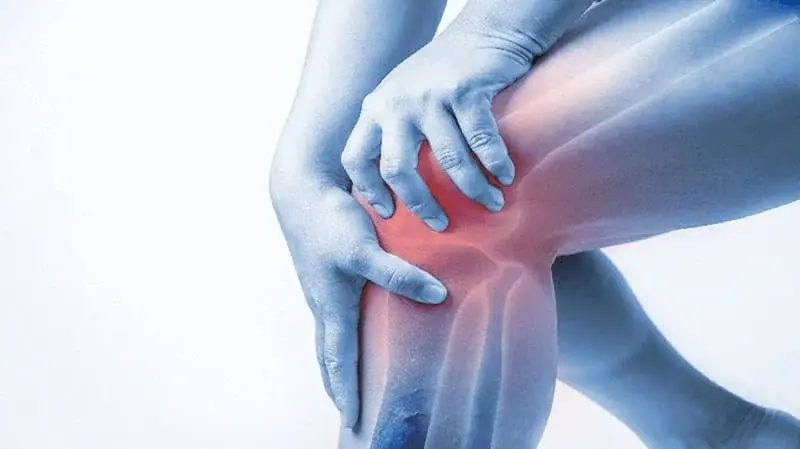
Arthritis Profile Test
Vitamin D is often associated with strong bones, but its role in joint health is just as critical—and sometimes overlooked. Beyond aiding calcium absorption, vitamin D influences inflammation levels, immune function, and cartilage repair, all of which directly affect how your joints feel and function. Without enough vitamin D, your joints may become stiff, painful, or prone to degeneration.
Whether you suffer from chronic joint pain or simply want to protect your joints as you age, optimizing your vitamin D levels is a simple and effective step. Let’s explore why this “sunshine vitamin” is so important—and how to boost it naturally.
Why Is Vitamin D Important for Joint Health?
Vitamin D is vital for calcium absorption and bone mineralization, but it also plays a critical role in maintaining the tissues around joints, such as cartilage, ligaments, and muscles. Here’s how it helps:
1. Reduces Joint Inflammation
Vitamin D acts as a natural anti-inflammatory by modulating the immune system. It reduces the production of inflammatory cytokines that contribute to swelling, stiffness, and pain in joints. People with rheumatoid arthritis or osteoarthritis often report worsening symptoms when their vitamin D levels are low, suggesting a clear connection between inflammation and deficiency.
2. Supports Cartilage Health
Cartilage, the flexible connective tissue that cushions joints, depends on vitamin D to regenerate and stay healthy. Research has found that vitamin D receptors are located in cartilage cells, meaning they play a direct role in joint maintenance. Low levels of vitamin D have been associated with increased cartilage loss and the progression of joint diseases.
3. Strengthens Muscles That Protect Joints
Your joints rely on muscles to stay stable. Vitamin D supports muscle contraction and coordination, reducing the likelihood of falls or injuries that can damage joints. In older adults, especially, maintaining muscle mass through adequate vitamin D intake can significantly improve joint longevity and mobility.
Signs You Might Have Low Vitamin D
Vitamin D deficiency is more common than most people realize, especially in regions with limited sunlight or among individuals who spend most of their time indoors. Some common signs include:
- Chronic joint or bone pain
- Muscle weakness or frequent cramps
- Persistent fatigue or lack of energy
- Depressed mood or seasonal affective disorder
- Frequent illnesses due to reduced immune function
A blood test called the 25-hydroxyvitamin D test is the most accurate way to measure your levels. Ideally, your blood vitamin D concentration should fall between 30–50 ng/mL some health professionals suggest that levels closer to 60 ng/mL may offer better protection against joint and muscle issues.
7 Natural Ways to Boost Your Vitamin D Levels
If your levels are low, don’t worry—there are many natural and practical ways to restore them.
1. Get More Sunlight Exposure
Your skin produces vitamin D when exposed to UVB rays from sunlight. Depending on your skin tone and location, just 10–30 minutes of sun exposure on your face, arms, and legs several times per week may be enough.
Pro tips:
- The best time is midday, when UVB rays are most efficient.
- Darker skin requires more sunlight to produce the same amount of vitamin D.
- Don’t forget to balance sun exposure with skin protection—short, controlled exposure is key.
2. Eat Vitamin D-Rich Foods
While sunlight is the best natural source, you can also get vitamin D through diet. Some foods naturally high in vitamin D include:
- Fatty fish like salmon, tuna, and mackerel
- Cod liver oil (a supplement and superfood)
- Egg yolks and beef liver
- Fortified products such as milk, cereals, orange juice, and plant-based milks
Including these foods regularly can help maintain baseline vitamin D levels, especially during winter.
3. Take a High-Quality Vitamin D Supplement
If you’re not getting enough from sunlight or food, supplements are an easy and effective option. Vitamin D3 (cholecalciferol) is the preferred form because it’s more potent and better absorbed than D2.
- Most adults can safely take 1,000–2,000 IU daily. Higher doses (up to 5,000 IU) may be needed for deficiencies.
- Always check your vitamin D status before starting a supplement and re-test every few months.
- Pair your vitamin D with a meal containing fat to enhance absorption.
4. Maintain a Healthy Weight
Vitamin D is fat-soluble, meaning it gets stored in body fat. In people who are overweight or obese, more vitamin D is sequestered in fat tissues and is less available for use in the bloodstream.
By maintaining a healthy body weight, you free up more usable vitamin D and reduce the strain on weight-bearing joints such as the knees and hips.
5. Include Magnesium and Vitamin K2
These nutrients work together with vitamin D to ensure it is absorbed and directed to the right places.
- Magnesium activates vitamin D in the liver and kidneys.
- Vitamin K2 ensures calcium is deposited into the bones rather than arteries or soft tissue, preventing joint calcification.
Good sources include spinach, almonds, bananas (for magnesium), and natto, hard cheeses, or fermented foods (for K2).
6. Exercise Regularly—Especially Outdoors
Exercise helps your joints stay flexible and strong. Activities like walking, cycling, swimming, and yoga are joint-friendly and can also encourage more time outside, giving you double benefits for vitamin D and physical health.
Make it a habit to do at least 30 minutes of moderate activity most days of the week, preferably in the morning or afternoon sunlight.
7. Test, Track, and Adjust
Regular blood testing ensures your strategies are working. If your levels remain low despite changes, your healthcare provider can recommend the right dosage or rule out absorption issues related to gut health or liver function.
Importance of Lab Reports for Monitoring Vitamin D
If you suspect you have low vitamin D—or just want to be proactive—getting a lab report is a crucial first step. A simple blood test known as the 25-hydroxyvitamin D test can measure your current levels and give you a clear picture of whether you’re deficient, insufficient, or within the optimal range. Lab reports provide precise data that can guide your supplementation, dietary changes, and lifestyle habits.
For individuals experiencing joint pain or stiffness, it’s also wise to buy an Arthritis Profile Test online to check for inflammatory markers and related conditions. Tracking your progress over time by comparing past and current lab reports helps you see how your vitamin D levels and joint health respond to your efforts, avoid unnecessary supplements, and catch any ongoing deficiencies before they impact your well-being.
Final Thoughts
Strong, pain-free joints are essential for living an active, independent life. Whether you’re an athlete, an older adult, or someone managing joint-related conditions, optimizing your vitamin D levels is one of the smartest natural strategies you can adopt. Through a combination of sun exposure, smart nutrition, strategic supplementation, and healthy lifestyle choices, you can nourish your joints from the inside out, keeping them flexible, strong, and ready to move for years to come. To stay on top of your progress, you can now view your lab report on your phone, making it easier than ever to track your vitamin D levels and take timely action for better joint health.






